History
![]() News
News ![]() Products
Products ![]() Pricing
Pricing ![]() Distribution
Distribution ![]() Notes & Interesting Articles
Notes & Interesting Articles
SBIG New Product Announcement January 2004
ST-2000XMC 2 Megapixel Color, Self-Guiding CCD Camera
Updated 8 March 2004
SBIG is pleased to announce the addition of a new 2 megapixel color model to thier line of self-guiding CCD cameras. The new color version of the ST-2000XM camera uses the Kodak KAI-2001CM CCD. This is essentially the same CCD as the one used in the ST-2000XM monochrome camera, with the exception of an RGB filter matrix over the pixel array. Previously, the experience with color CCDs in astronomical applications was disappointing. However the recent experiments at SBIG with this color version of the popular KAI-2001M CCD has changed minds. According to independent testers, this CCD has better color characteristics than other CCDs tested and its large, 2 megapixel CCD with built-in TC-237 guiding CCD make it ideally suited for astro imaging.
 |
First
light from our first beta tester Google "M33" images and compare this first light image with any of the thousands of images that Google brings up. ESPECIALLY IMPORTANT the color camera ST-2000C image has not been processed, e.g. nothing but a Dark (no flat) and color conversion and a contrast stretch. This camera is more fun than the proverbial barrel of monkeys." |
 |
Eskimo Nebula |
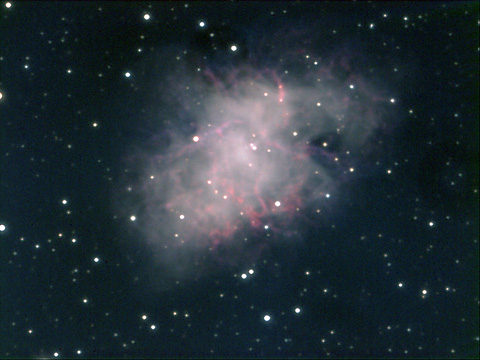 |
Crab Nebula |
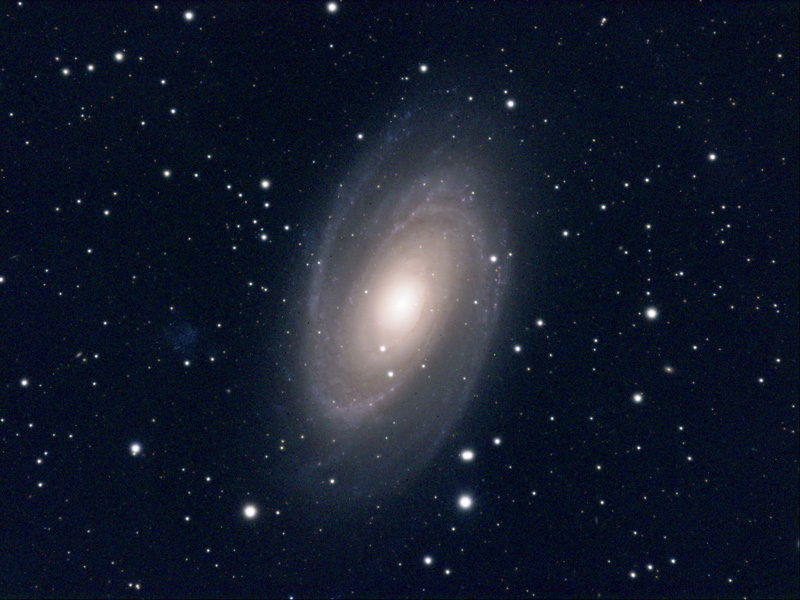 |
M81 |
The following are some common questions and answers about this new color camera:
Q1. What is the pixel size and array size?
A1. Same as the ST-2000XM monochrome CCD: 1600 x 1200 pixels at 7.4 microns square.
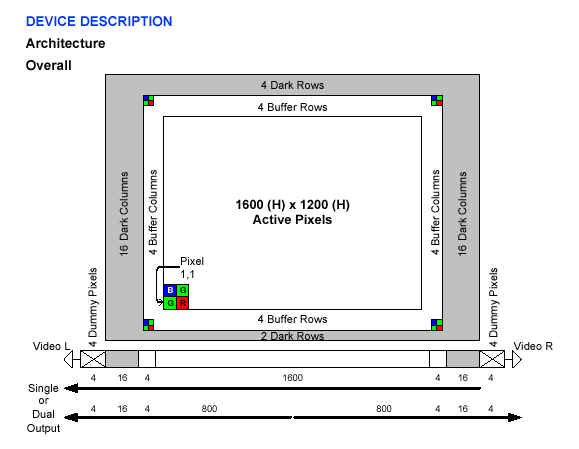
Q2. Is there any loss of resolution compared to imaging with a monochrome ST-2000XM?
A2. Yes and no. If by resolution you mean the total number of pixels used to make up the final image, then no, there is no loss. Color images will be 1600 x 1200 pixels, just like monochrome images from an ST-2000XM camera. However, if by resolution you mean the ability to resolve detail, then there is a possible loss of detail compared to imaging through external filters using a monochrome CCD where each pixel of the CCD is exposed to each colored filter and then merged to create a color image. In the case of the color CCD, since each pixel sees only one color, the RG and B values for each pixel must be created from the data available from the remaining pixels. This data is gathered from neighboring pixels during the merge The final image is therefore a full 1600 x 1200 but each pixel contains data that has been interpolated from neighboring pixels to create a color file.
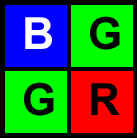 |
To think of it another way - imagine imaging an object that is entirely one color, such as an H-alpha nebula. The raw full frame grayscale image will appear bright every 4th pixel (red) and dark in the others (blue and green) until you perform a color merge to create an RGB image. Then the non-red pixels are interpolated and the full 1600 x 1200 pixels compose the final image.
Q3. What is the size of the guide chip?
A3. The guide chip is the TC-237H with 657 x 495 pixels at 7.4 microns square.
Q4. Since the color imaging is done without a filter wheel, will it be easier for locate guide stars?
A4. Yes. Since the imaging CCD has the filters directly over the array, the guide chip will always be using the full spectrum to view guide stars.
Q5. Can the color data be separately processed like current RGB files before combining?
A5. Yes, our software will allow you to extract separate R, G and B files from the original frame which you can process separately just as you would with separate RGB files from a monochrome CCD.
Q6. Can you color combine automatically without processing the separate files first?
A6. Yes. We plan to add a feature to CCDOPS where the image will be automatically merged as it is displayed. So when you take an image and look at it on the computer monitor it will be in color.
Q7. How does the camera's QE compare to the monochrome ST-2000XM?
A7. The monochrome version has higher QE without filters and still somewhat higher QE with our dichroic filters. When you take into account the transmission of the RGB filters and the native QE of the CCD, then the filtered monochrome CCD and the color CCD are very similar. Our dichroic filters are better than the micro-filters so there is still a benefit in QE (as well as resolution) to using an external filter wheel. The price is longer overall exposure time. The chart below shows the QE of a KAI-2001M CCD, the effective QE of the KAI-2001M monochrome CCD when external filters are added and the filtered QE for the KAI-2001CM color CCD from the Kodak data sheet.
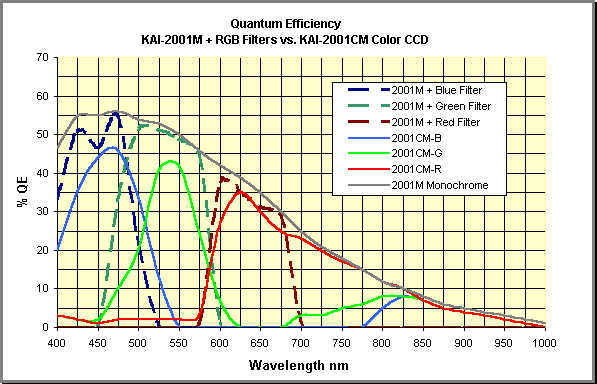
Q8. Can narrow band filters such as H-alpha filters be used with a color CCD?
A8. Yes. However, for narrow band imaging a monochrome CCD is better because each pixel sees the filtered signal. But binning the color CCD 2x2 and using it as a monochrome narrow band imager is possible albeit with somewhat lower sensitivity than the monochrome version.
Q9. What is the price of the color version of the ST-2000XM?
A9. The U.S. list price will be $2,995.
Q10. Can my existing ST-2000XM camera be converted to this color CCD?
A10. Yes. The cost is $995.
Q11. When will this camera be available?
A11. SBIG has ordered the initial batch of CCDs for production beginning in March 2004. Company Seven expects to start making deliveries soon after then.
Q12. Does SBIG plan to add any other color CCD cameras to the line up?
A12. Yes. SBIG plans to add the 4 megapixel KAI-4020CM as an option to the Research Series cameras. It will be the same price as the monochrome model. In addition SBIG is going to test a 5.1 Megapixel full frame color CCD. The 5.1 Megapixel is a new CCD to SBIG. It is loosely based on the 3200 design. It is a full frame CCD with 6.8 micron pixels, RGB color filter matrix and antiblooming. Its price will depend on the whether it fits in the ST style body or needs the STL body. Finally, there is the 11 Megapixel, 35mm format color version of the KAI-11000M. If it performs as well as the others it will be made an option in the large format camera body for about the same price as the STL-11000M. SBIG already has one on order for testing.
Go to Price List
Return to SBIG Products page
Contents Copyright 1994-2004 Company Seven - All Rights Reserved